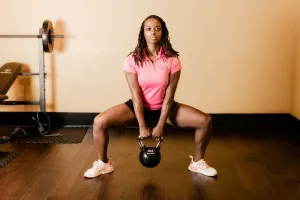Manual treadmills can be an excellent option for individuals looking to improve their fitness levels. Unlike motorized treadmills, manual treadmills require the user to power the belt themselves by walking or running, providing a more challenging workout that engages additional muscle groups. This can lead to greater calorie burn and increased cardiovascular benefits compared to motorized treadmills.
Benefits of Manual Treadmills
Manual treadmills offer a more natural walking or running experience, as the user controls the pace and intensity of their workout. By manually propelling the belt, users can tailor their exercise to their fitness level and goals, enhancing coordination, balance, and overall muscle strength. The simplicity of manual treadmills also translates to affordability and easier maintenance, making them a practical and cost-effective choice for home gyms and fitness enthusiasts.
Natural Movement and Control
One of the biggest advantages is the natural movement it promotes. Because you’re in control, you set your pace. This autonomy can help mimic outdoor running conditions, where you can slow down or speed up instinctively. Many users find that this control leads to a more fulfilling and effective workout. For example, someone training for a marathon might appreciate the ability to simulate outdoor conditions without leaving their living room.
Cost and Maintenance
From a financial standpoint, manual treadmills are often more affordable than their motorized counterparts. With fewer mechanical components, there’s less that can go wrong, reducing maintenance costs. A simple routine of keeping the belt clean and lubricated can ensure it remains in good condition. I’ve personally found that a quick weekly checkup keeps everything running smoothly, which is both time-efficient and budget-friendly.
Considerations for Using Manual Treadmills
While manual treadmills come with several benefits, there are factors to consider when utilizing them. Since the belt’s movement depends on the user’s effort, maintaining a consistent pace can be more challenging, especially for beginners. Furthermore, manual treadmills often lack advanced features like incline adjustments and pre-set workout programs, which may limit workout variety and customization options.
Challenges for Beginners
For those new to fitness or manual treadmills, the initial experience can be daunting. Keeping the belt moving at a consistent rate requires practice and patience. Beginners might experience fatigue more quickly, as more muscle groups are engaged. A friend of mine who recently transitioned from a motorized treadmill to a manual one shared how she initially struggled with pace but gradually built up her stamina and control over a period of a few weeks.
Lack of Features
The absence of features like automatic incline adjustments may seem like a downside, but it encourages users to find creative ways to add variety. For instance, placing the treadmill on a slightly inclined surface or using it in conjunction with other fitness equipment can enhance workouts. A simple DIY solution I’ve used is propping the front of the treadmill on a sturdy platform to simulate uphill walking.
Tips for Maximizing Your Manual Treadmill Workout
For optimal results with a manual treadmill, focus on maintaining proper form and posture while walking or running. Engaging your core muscles and being mindful of your breathing can enhance the efficiency and benefits of your workout. To add variety and intensity, consider implementing interval training or incorporating uphill climbs to target different muscle groups and boost overall cardiovascular endurance.
Proper Form and Posture
Maintaining correct posture is crucial. Stand tall, keep your shoulders back, and your head aligned with your spine. This not only prevents injury but also maximizes efficiency. Core engagement is key; think of your core as the powerhouse that supports every movement. A good trick is to imagine a string pulling you upwards from the top of your head, encouraging a straight and strong posture.
Interval Training
To keep things interesting, try interval training. This involves alternating between high-intensity periods and slower recovery phases. For example, walk briskly for two minutes, followed by a one-minute sprint. This method not only torches calories but also improves cardiovascular health. On my manual treadmill, I often set a timer to guide these intervals, which keeps me motivated and focused.
Uphill Climbs
Simulating hill workouts can be highly beneficial. If your treadmill doesn’t have an incline feature, mimic this by using the treadmill on an inclined surface. This targets the glutes, hamstrings, and calves more intensely. A practical tip is to combine this with resistance bands for an added challenge. Incorporating uphill climbs once or twice a week can significantly enhance muscle tone and endurance.
Advanced Techniques and Workouts
Once you’re comfortable with the basics, there are numerous ways to advance your workouts to ensure you’re continually challenged and making progress.
High-Intensity Interval Training (HIIT)
HIIT is a powerful way to boost your workout regime. It involves short bursts of intense activity followed by rest or low-intensity periods. For instance, sprint on the treadmill for 30 seconds, then walk for a minute. This not only improves cardiovascular health but also increases metabolic rate for hours post-workout. I’ve found HIIT sessions to be incredibly effective for breaking through fitness plateaus.
Strength Training Integration
Manual treadmills can be integrated into strength training circuits. Use the treadmill for a cardio burst, then switch to bodyweight exercises like push-ups or lunges. This combination can enhance overall fitness and strength. A routine I often recommend is 5 minutes on the treadmill followed by a set of squats, repeated for 30 minutes. This keeps the heart rate elevated while building muscle.
Common Mistakes and How to Avoid Them
Like any fitness equipment, using a manual treadmill incorrectly can lead to suboptimal results or even injury. Let’s look at some common pitfalls and how to avoid them.
Overexertion
Beginners often push themselves too hard, too quickly. It’s crucial to listen to your body and gradually increase intensity. Start with short sessions and slowly build up. Remember, consistency is more important than intensity in the early stages. A friend of mine suffered from shin splints due to overexertion, which set her back weeks. She learned to pace herself better by progressively increasing her workout time by five minutes each week.
Incorrect Footwear
Wearing the right shoes is essential for cushioning and support. Many people underestimate this, but proper footwear can prevent injuries and improve performance. Running shoes with good arch support and cushioning are ideal. I once made the mistake of using old sneakers for treadmill workouts and quickly realized the impact on my knees. Investing in quality shoes made a noticeable difference in comfort and performance.
Ignoring Warm-ups and Cool-downs
Skipping warm-ups and cool-downs is another frequent mistake. These are crucial for preparing your body for exercise and aiding recovery. Spend at least five minutes warming up with dynamic stretches or light walking, and finish with static stretches to cool down. Personally, I find that a few minutes of stretching post-workout reduces soreness and improves flexibility.
The Environmental and Health Benefits
Using a manual treadmill isn’t just good for your fitness; it can also be a more environmentally friendly and health-conscious choice.
Eco-Friendly Fitness
Without a motor, manual treadmills consume no electricity, making them an eco-friendly option for sustainable living. This can be a significant factor for those looking to reduce their carbon footprint. Not only do you save on energy bills, but you also contribute to a greener planet. A neighbor of mine switched to a manual treadmill in an effort to live more sustainably, and they noticed both environmental and financial benefits.
Low Impact on Joints
Manual treadmills often come with a softer belt, which can absorb shock better than many outdoor surfaces. This makes them a gentler option for people concerned about joint health. It’s a common misconception that treadmill workouts are always high impact; with proper technique and equipment, they can be quite joint-friendly. I recommend manual treadmills to clients recovering from minor injuries for this very reason.
Choosing the Right Manual Treadmill
Not all manual treadmills are created equal. Here’s what to consider when selecting the right one for you.
Size and Space
Consider the space available in your home. Manual treadmills are typically more compact than motorized versions, but it’s still important to measure your space. Some models are foldable, which can save space in smaller areas. I’ve seen many home gyms where a foldable treadmill fits perfectly into a corner when not in use.
Weight Capacity
Ensure that the treadmill can accommodate your weight. Most models clearly list their maximum user weight, which is crucial for safety and performance. A good rule of thumb is to choose a treadmill with a capacity that exceeds your weight by at least 20%. This ensures durability and longevity. A client of mine once ignored this advice and faced stability issues, leading to an early replacement.
Features and Ergonomics
Look for features that suit your needs, such as ergonomic handrails or a multi-layer belt for added comfort. Some models include a basic monitor to track speed and distance, which can be a useful motivational tool. While these features aren’t essential, they can enhance your workout experience significantly. I personally find that having a distance tracker keeps me motivated to push further each session.
Real-Life Success Stories
Hearing about others’ experiences can be incredibly motivating. Here are a few real-life stories of individuals who have thrived using manual treadmills.
From Couch Potato to 5K Runner
A colleague of mine, initially a self-proclaimed couch potato, started with short, manageable sessions on a manual treadmill. Within a year, she progressed to running a 5K race. Her journey began with just 10-minute walks, gradually increasing as her confidence and endurance grew. Her story is a testament to the power of consistency and the adaptability of manual treadmills.
Weight Loss Success
Another inspiring story involves a friend who used a manual treadmill as part of her weight loss journey. Combined with a balanced diet, she lost over 50 pounds in 18 months. The treadmill became an integral part of her daily routine, offering a convenient way to burn calories without the need for a gym membership. Her success highlights the potential of manual treadmills as a tool for sustainable weight management.
Final Thoughts
Manual treadmills serve as valuable fitness tools for improving endurance, strength, and achieving weight loss objectives. By recognizing the advantages and considerations associated with manual treadmill usage, individuals can design tailored workout regimens that align with their fitness aspirations. Whether aiming to enhance cardiovascular health, build muscle strength, or shed excess pounds, manual treadmills offer a versatile and accessible workout option that can support individuals in their journey toward improved fitness and well-being.
Incorporating the tips and insights shared here can help you maximize your workouts and achieve your fitness goals. So lace up those sneakers, and step onto your manual treadmill with confidence—your fitness journey awaits!



